Parquet chemistry is a group of products used to protect and decorate wooden floor, wall and ceiling coatings. This includes varnishes and paints, primers and putties, stains and tints, adhesives, antiseptics, solvents and thinners. The majority of wood varnishes purchased at the store are usually liquid, ready-to-apply mixture. The question arises: is it possible, and how to dilute the varnish, if it is too viscous?
- Dilute, Dilute, or Dissolve
- Polyurethane Blends
- Alkyd mixtures
- Bituminous mixtures
- Yacht varnishes
- How to remove dried varnish
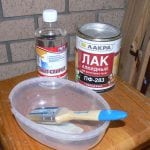
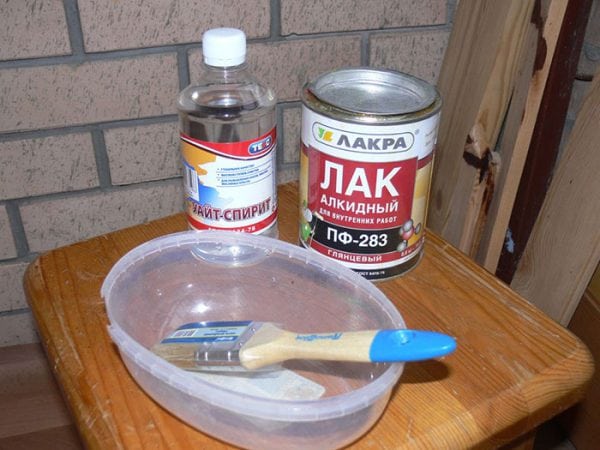
To answer this question, several factors must be taken into account. First, pay attention to the basic composition of the mixture. Secondly, we select the right solvent. Thirdly, when mixing, we observe proportions so as not to lower the quality of the material. Let us consider in more detail how to dilute a thickened varnish and how to do it correctly? And also, what to use to remove the old protective coating from wood and what is the maintenance of the tool?
to contents ↑Dilute, Dilute, or Dissolve
At first glance, there’s no difference. Using a special tool, we bring the lacquer substance to "working condition". A solvent is a liquid that dissolves dried varnish, bringing it from a solid to a liquid state. We use a thinner if it is necessary to change (lower) the viscosity of the paints.
Some types of organic eluents act in both roles, but some can be effective in one task and completely useless in another. So, for example, mineral spirits can be diluted with the compositions of polyurethane, alkyd and oil groups. But if the varnish is dry, dissolving it with white spirit will not work.

But shellacs, on the contrary, are equally dissolved and diluted with denatured alcohol. But we will not go into such subtle details.
If you need advice on how to dilute the varnish or what to use for the dilution of paints, it is better to consult specialists in this field.
We suggest that you carefully consider which solvents you want to apply in specific cases.
to contents ↑Polyurethane Blends
Polyurethane varnishes, paints, primers, adhesives, etc. contain polyurethane - a modern polymer. The combination of its properties surpasses such well-known materials as rubber, plastic, rubber, metal. To obtain paints and adhesives of high strength, in industrial production it (polyurethane) is mixed with special chemicals.
A lot is made of polyurethane varnishes and water-based. This parquet chemistry is environmentally friendly and non-toxic.
If necessary, make the substance more liquid, as a diluent for polyurethane compounds, you can use:
- toluene;
- xylene;
- acetone;
- eluents of the type P-4, P-5.
It is not recommended to add alcohols, water, type 646 eluents.
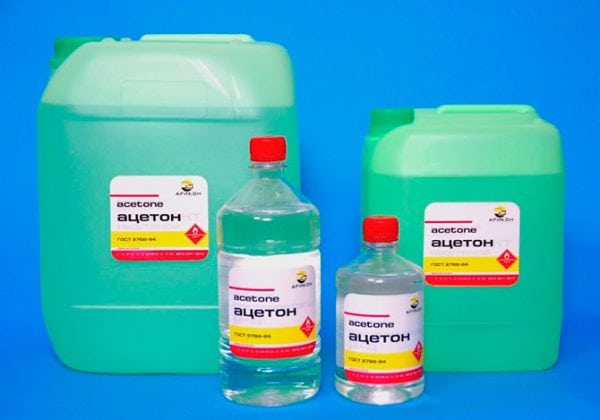
Alkyd mixtures
Alkyd compounds have good adhesion, moisture resistance, insensitivity to ultraviolet, strength. They can be used for exterior and interior use. In alkyd mixtures, there is a main component, organic solvents, desiccants (for quick drying), additives. The main component may be:
- pentaphthalic resin;
- glyptal resin with cottonseed oil;
- a mixture of melamine formaldehyde and alkyd resins.
To enhance the properties of materials, elements of alkyd resins are often included in multicomponent varnishes, paints, enamels. The traditional diluent here is white spirit.
to contents ↑Bituminous mixtures
Bitumen varnish is a mixture of special grade bitumen, various resins and oils. After drying, a strong black film is formed on the surface, moisture-resistant, immune to chemical attack. It is considered a fairly new material in domestic use. Belongs to the category of inexpensive. It is more often used as an anti-corrosion protective layer.
For wooden surfaces it is used when it is not required to emphasize the natural texture of the base (instead of paints). Bituminous material has found application as a decorative coating for the effect of aging surfaces (patina). Another unique feature of bitumen mixtures is cold gluing. The bitumen solution is diluted with white spirit.
So that it does not thicken during storage, the container must be airtight. The storage location should be dark (without direct sunlight), with moderate temperature and humidity.
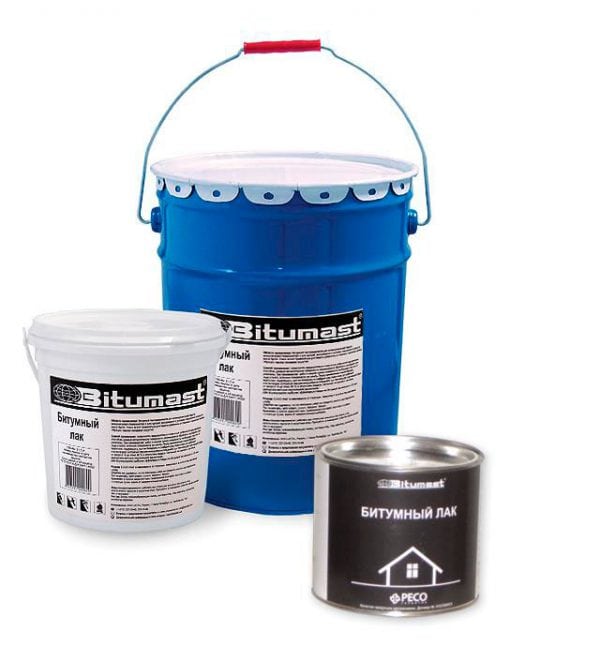
Yacht varnishes
Yacht (or yacht) varnish is one of the most effective means of protecting surfaces made of natural wood. Already from the name the features of the sphere where it is applied are clear. At the same time, the yacht composition is excellently suited for woodwork inside and outside any objects (not only boats, boats, yachts). It is immune to moisture, temperatures, aggressive environments.
Yacht varnish. Basic properties:
- high degree of protection of wooden structures;
- physical and mechanical immunity to environmental influences;
- durability, extension of the service life of wood.
To achieve such results, toxic chemicals (toluene, xylene) are used in the production of the material. There are several production technologies:
- alkyd yacht (based on an organic solvent of white spirit);
- urethane-alkyd yacht (the same eluent, but in smaller quantities);
- alkyd-urethane yacht (solvent additives have strong volatility);
- acrylates (water-based compounds).
Dilutes yacht varnish with white spirit, not more than 5% of the total. The solvent acts on the substance only in fresh form. After drying, the varnish parquet flooring will become insensitive.
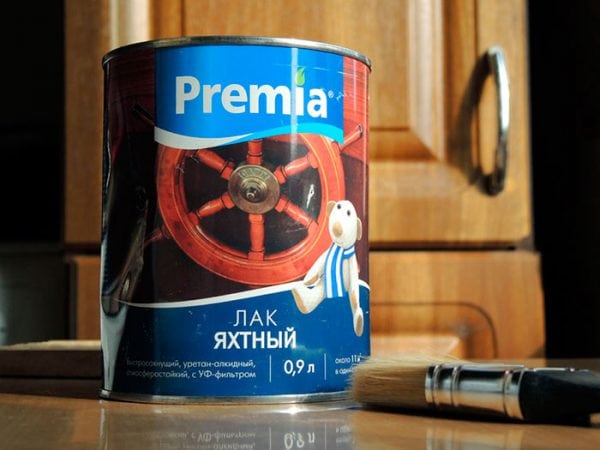
How to remove dried varnish
Above, basically, are listed ways to improve the consistency if the varnish has thickened. And what should be done to remove varnishes and paints from painting tools? Can synthetic material be removed from wood after application?
Old furniture or remove parquet from the surface wood just doesn’t work. Usually, where possible, looping or grinding is used. For non-mechanical removal, the type of solvent is selected individually. The basic composition and chemical properties of the varnish are taken into account.
The simplest way to remove an already unsuitable parquet protective coating is to use a special wash. The substance is a chemical mixture.You can use a liquid, gel or powder. Acetone copes with the simplest types of paints and varnishes. To remove shellac, meth is more suitable.
First, a liquid, gel or powder is applied to the varnish surface. Then you need to wait for the film to soften. To speed up the process, it is recommended to cover the treated surface with polyethylene. After some time (from 40 minutes to 4 hours), the old varnish will begin to swell, darken. What to do next?
To remove softened varnish, it is more convenient to use a spatula. Care must be taken not to damage the wooden surface. What to do if the first time the old protective coating is not completely removed? If necessary, processing can be repeated.
To remove residual material from paint tools are used:
- A warm water-soapy solution is washed off with fresh water-based parquet lacquer;
- White spirit, kerosene, turpentine are suitable for most organic solvent-based paints and varnishes. The residual substances are well rinsed, then the instrument is washed with some household chemical and rinsed thoroughly in water.
Choosing the type of eluent for the dilution of paint and varnish mixtures, it is important to carefully study the composition, as well as use the manufacturer's recommendations on the package.
Do not forget about personal protective equipment, especially if you have to work with strongly smelling, quick-drying compounds. Ventilation of the room during and after work will protect against poisoning by toxic fumes. Keep these materials away from children.




